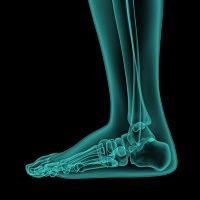Article
Anakinra Can Be an Effective Option for the Treatment of Gout
Author(s):
Critically ill patients with acute gouty arthritis who cannot be treated with standard therapy responded well to treatment with anakinra in a recent study.

Study results published in Seminars in Arthritis & Rheumatism indicate that anakinra is a safe and effective treatment for gout in critically ill hospitalized patients.
For the study, a cohort of 13 patients with complex critical illnesses (the authors reported that “10 patients were in the Intensive Care Unit, 1 was in the burn unit for extensive 3rd degree burns, 1 was critically ill with a new diagnosis of hemophagocytic lymphohistiocytosis, and 1 was critically ill in isolation with active disseminated multidrug-resistant tuberculosis”) were treated with anakinra 100 mcg/day for 20 episodes of acute gouty arthritis.
The patients had shown no or incomplete response to prior treatment with colchicine and/or steroids. No patients received treatment with NSAIDs. Twelve of the 13 patients had a prior diagnosis of gout, 11 had active infections, and 12 had renal insufficiency.
The authors reported that “all patients had a significant response to anakinra treatment.” Half (10/20 episodes) showed significant improvement or total resolution within 24 hours, an additional 40 percent (8/20 episodes) had done so by 48 hours, and the remaining 10 percent (2/20 episodes) by 72 hours.
All patients responded to treatment. Anakinra was well tolerated by the 12 patients in the study with renal insufficiency. The authors reported only 1 case of leukopenia and 1 possible infectious complication.
Based on the results from this small, observational, retrospective study, the authors concluded that anakinra is “a safe and efficacious treatment for acute gouty arthritis in medically complex, critically ill patients when standard treatment modalities cannot be used.”





